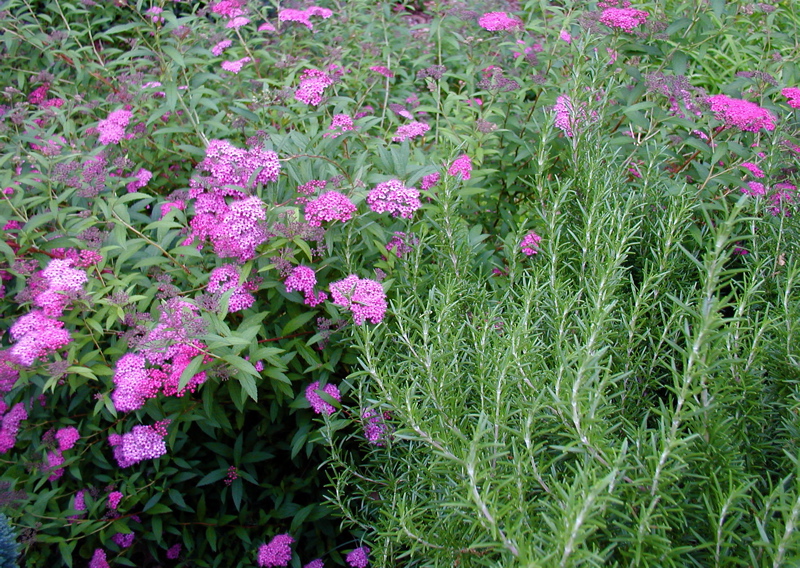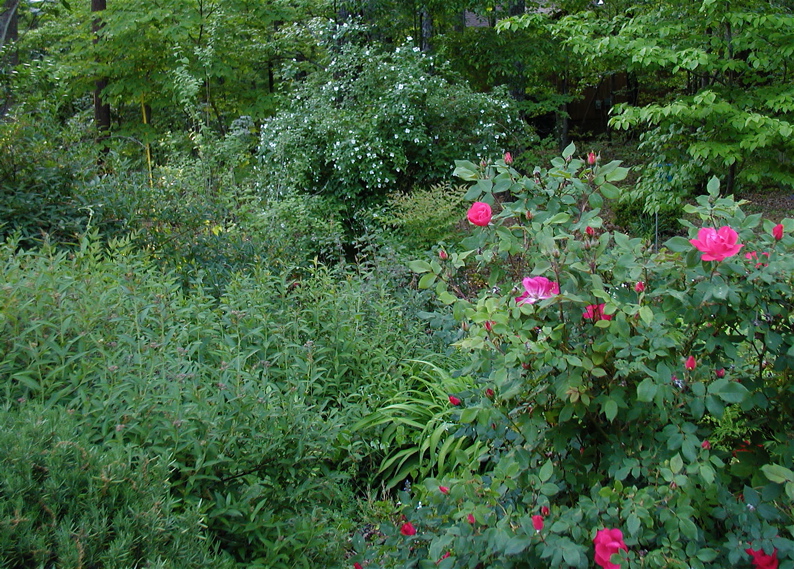Pavonia Hastata, a Dark-Eyed Beauty
 Tuesday, June 21, 2011 at 3:00PM
Tuesday, June 21, 2011 at 3:00PM Say 'Pavonia hastata' a few times. For me, the words conjure up images of Spanish conquistadors and dark eyed maidens. A few years ago I bought a plant tagged 'perennial hibiscus'. The glossy, spear shaped leaves were intriguing, different from the common hibiscus plants that grow around here. Recently, thanks to fellow blogger Cat, The Whimsical Gardener, I learned its botanical name.
Pavonia hastata is a shrub that produces myriads of delicate pink blooms with deep burgundy centers. Hummingbirds love the flowers, as do bees and butterflies. Each bloom is about two inches across and lasts only a day, but with so many buds, it is always in bloom — in my garden from June till frost. It is native to South America and also grows in parts of Australia. It is evergreen in zones 9-13, but it is hardy, though deciduous, in my zone 7b garden. The shrub will grow about 3-4 feet tall, and I prune it to about one feet in late winter to prevent legginess. It also seems to bloom better when I do this.
Pavonia hastata is also known as spearleaf swampmallow. It will grow in drier conditions, but with good soil, sunshine, and plenty of water it can become weedy, and, indeed I pull up unwanted seedlings every spring. They are easy to identify, and so far I haven't found them anywhere except in the area adjacent to the mother plant. I have planted several of the seedlings in a row, and now I have an attractive hedge along one side of the patio.
Today is the summer solstice, the longest day of the year, the first day of summer according to the calendar. But we have been experiencing summer weather for many weeks now, and a lot of perennials stop flowering in the heat. I am grateful for Pavonia hastata. a dark-eyed beauty with pastel skirts, dancing in the summer breeze.
 Permalink
Permalink 



